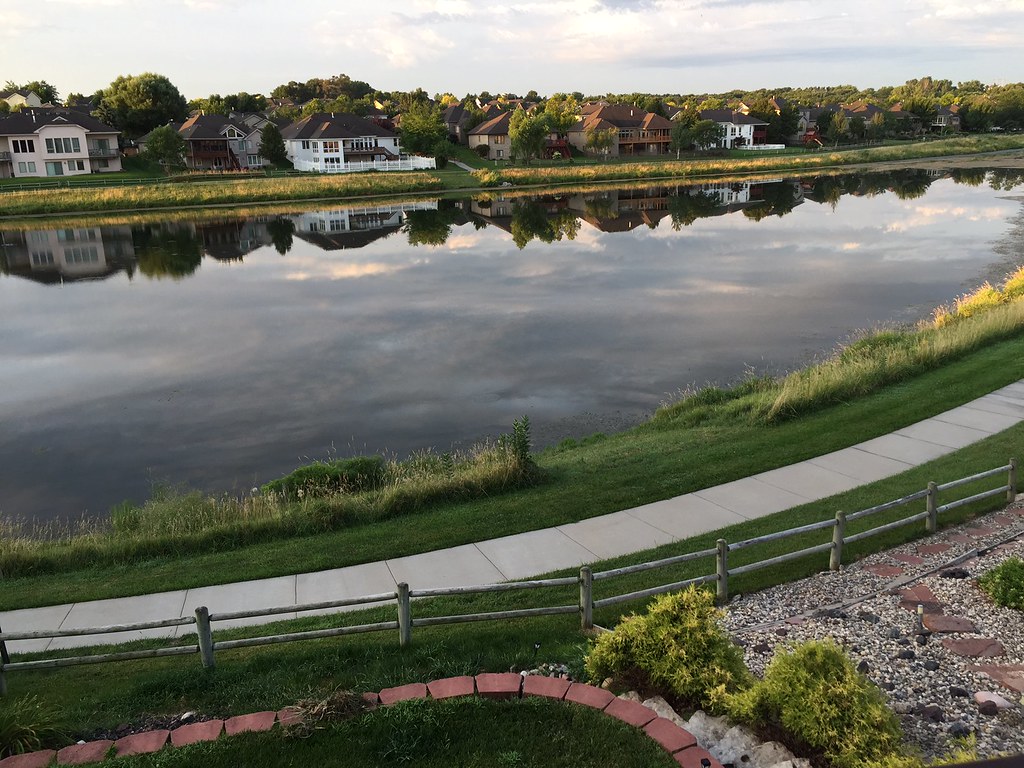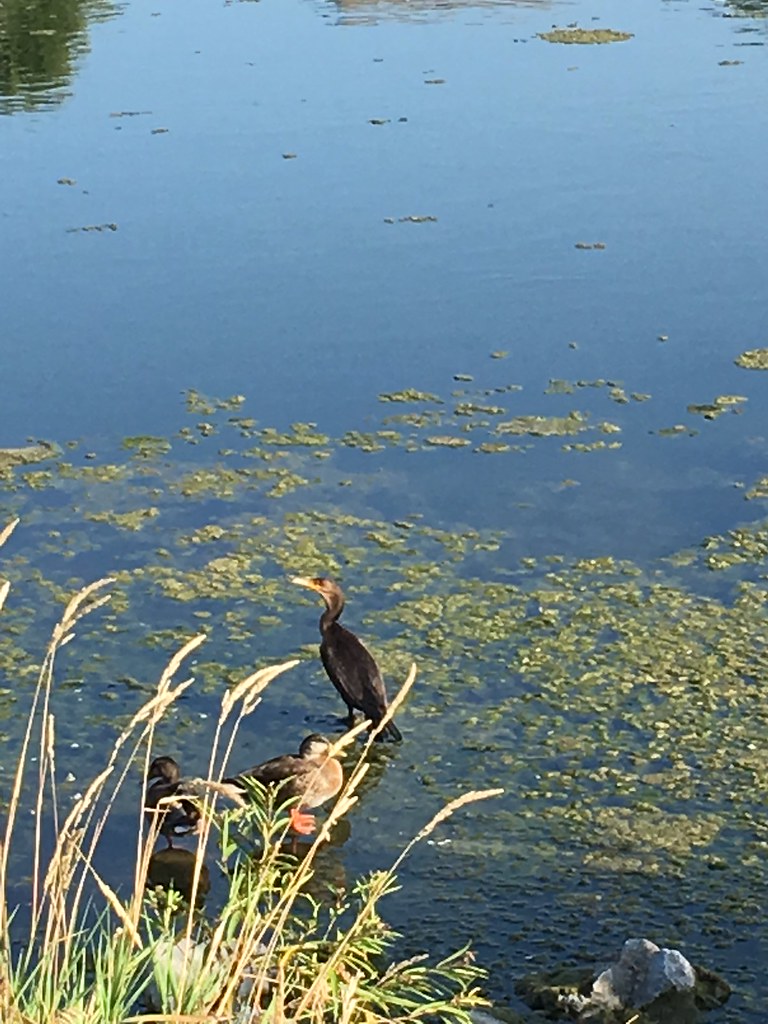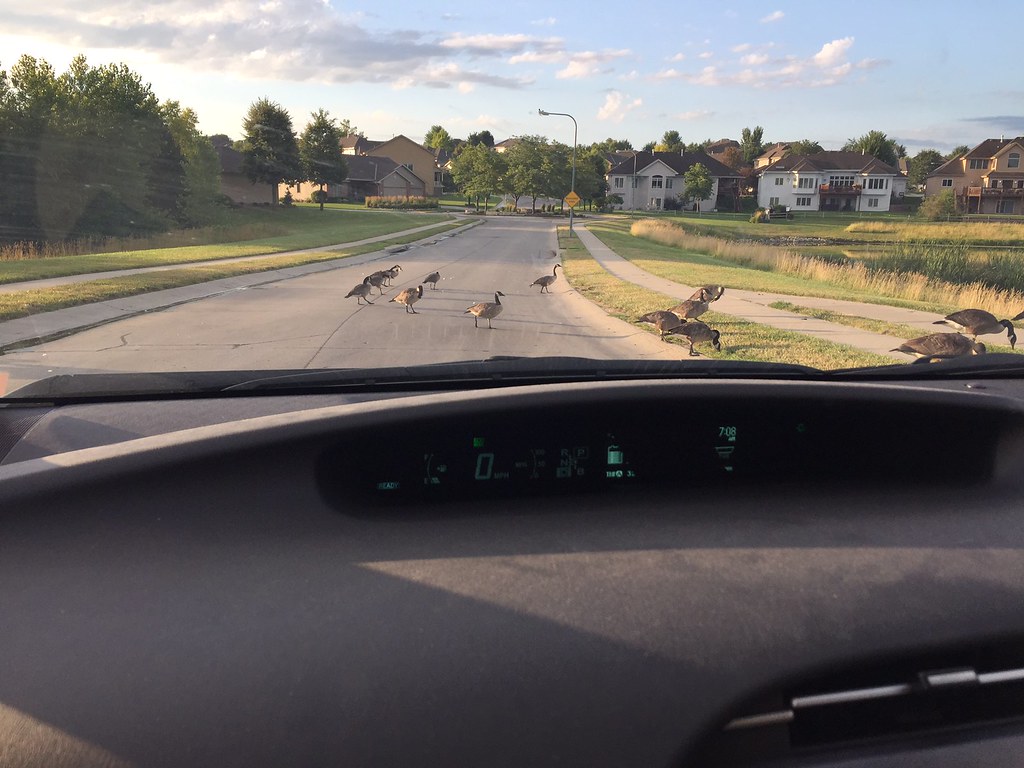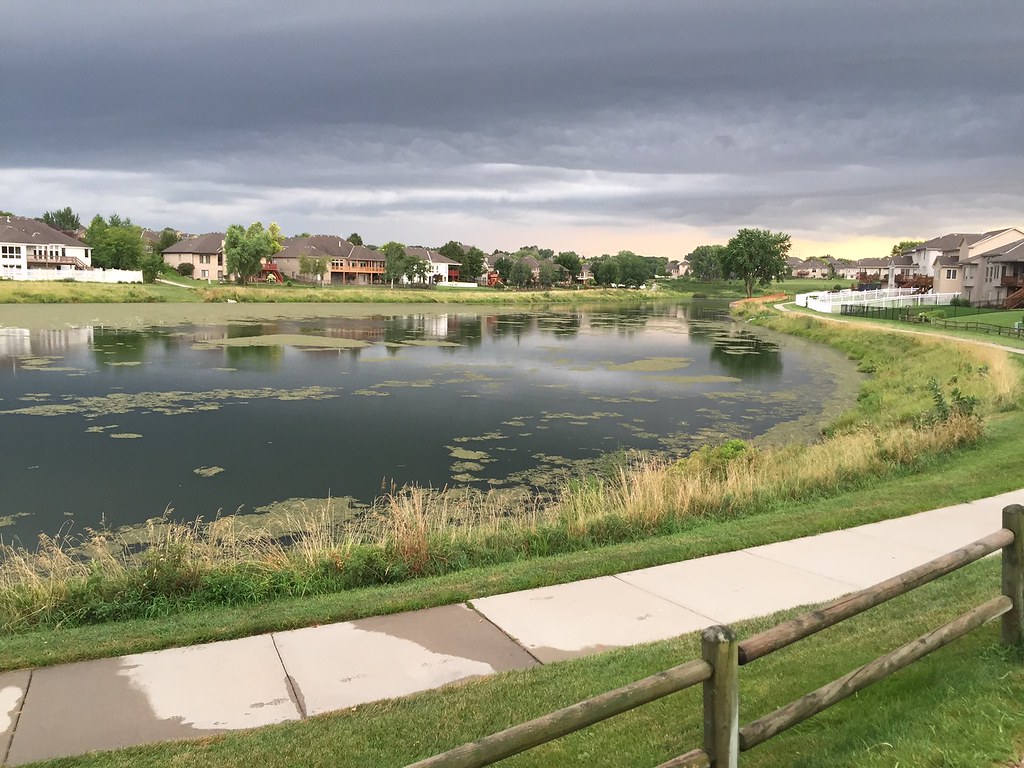I am delighted to report that I am now happily entrenched in my new environment–just 2 miles west of my previous home–here at the western edge of the city of Omaha. “Chez Ginger,” as we have named our new place (after Ginger the dog), came from a desire of an already-suburban midwest family to live in close proximity of walking paths.
Ginger et moi
Indeed, we were extremely fortunate to find a home backing onto a small lake–or a large pond, rather–that ties in to a system of trails with short links and both west and east to larger lakes with trails.
Our lake/pond, as seen from our back deck
We have already seen dramatic changes in the biology (flora and fauna) in our new environment, despite the proximity. The open space of the lake is less hospitable to woodpeckers and warblers (which we miss!)–but of course we have traded them for sparrows, cormorants, herons, geese, ducks and wild turkeys.
Overall, we are having a great time exploring our new area, which borders on woods and farmland. The one issue that has become a bit of an eye-sore is the algal bloom on the lake.
Large areas of the lake are now covered in this phytoplankton. In reading up on the problem, it turns out that this is fairly common for bodies of fresh water that have minimal water movement; while the lake is a coalescence of two streams that run into a larger low-lying area (that has been dammed), the water flow is slow. There is a fountain that has been installed to stir up movement, provide oxygen and increase the likelihood of healthy fauna (fish, ducks, geese and other water fowl. However, run-off from the neighborhood, apparently from those who apply fertilizers to their gardens/lawns, creates a nutrient-rich atmosphere that, combined with the excessive global-warming-derived heat, leads to this algal bloom. Drastic treatments may endanger the fish and other water wildlife, so it was decided to take a cautious approach with minimal intervention, and hope for a respite in the coming season.
For now, I try to enjoy the view when the algae get blown to the other end of the lake–and I wait (not impatiently) for the seasons to change, with great curiosity to see how the lake will freeze come December.






It sounds lovely. My old place was in proximity to slow-moving ponds and canals, and the local government handled it two ways: with big bales of floating hay (no idea why or whether that helps but it’s a very popular approach in the UK), and with an (apparently harmless) blue dye that absorbed a particular wavelength of light that algae need.
I’ve seen the blue dye used here on smaller ponds–even several in our very same neighborhood. No idea why they don’t use it on the lake. With regard to bales of floating hay (which should be easily available in this area), I’ve not heard of that! Will try looking it up online…
There it is: barley straw to control algae…
https://njaes.rutgers.edu/pubs/fs1171/Pond-Lake-Mgmt-Using-Barley-Straw-to-Control-Algae.asp